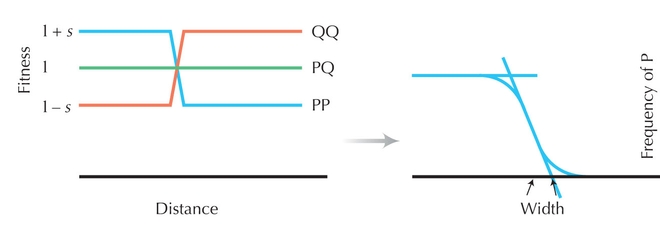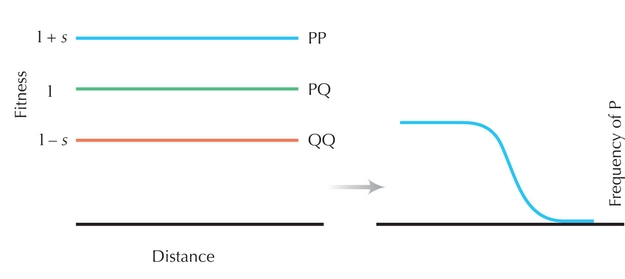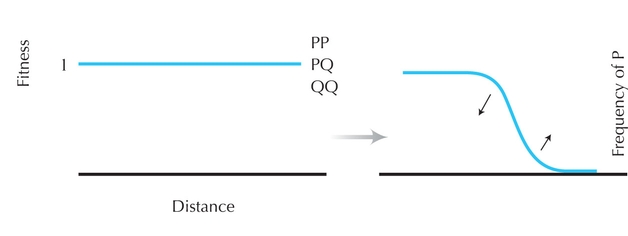Clines Maintained by Selection and Dispersal
When selection and diffusion interact, the spatial patterns they produce vary over a characteristic scale, l =  . We can see why the scale must have this form by examining the dimensions of diffusion and selection. The rate of diffusion σ2 is measured in units of distance squared per generation, whereas selection s is measured as a rate per generation. Taking the square root of their ratio gives a quantity with the dimensions of distance, as required. . We can see why the scale must have this form by examining the dimensions of diffusion and selection. The rate of diffusion σ2 is measured in units of distance squared per generation, whereas selection s is measured as a rate per generation. Taking the square root of their ratio gives a quantity with the dimensions of distance, as required.
We can define the cline width as the inverse of the maximum gradient; this is just the distance indicated in the diagrams below. The exact width of the cline depends on the model of selection. Below, we list a few examples.
Ecotone: Selection s favors one allele on one side of a sharp boundary (i.e., left side of the boundary) and the other allele on the right side of the boundary. Here, width =  . .

Heterozygote disadvantage: Here, width = 4 l.

Wave of advance: Selection s favors allele P everywhere. Here, width = 8l and speed of advance =  = 2s l. = 2s l.

No selection: The characteristic scale is now l =  . After mixing for time T, cline width is . After mixing for time T, cline width is  . .

|

